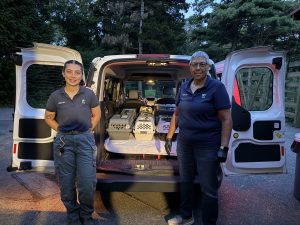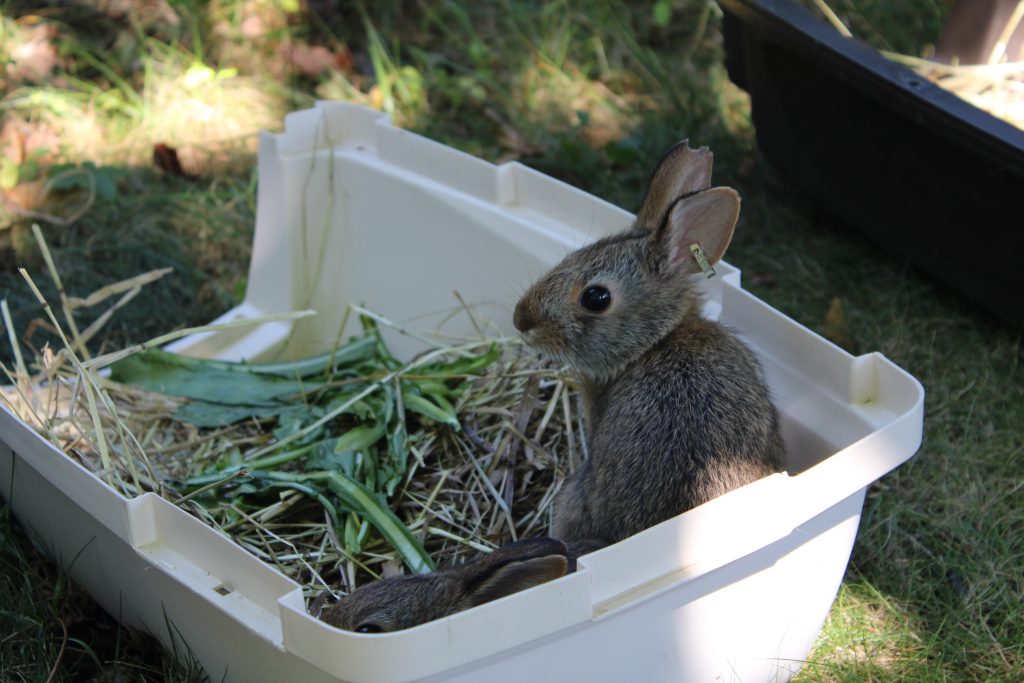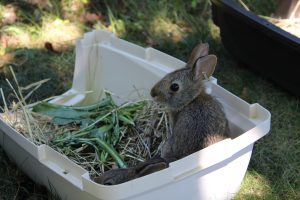
Courtesy US Fish and Wildlife Service
Queens Zoo Plays Key Role in Rabbit Conservation Effort
By MOHAMED FARGHALY
mfarghaly@queensledger.com
Fifteen young New England cottontail rabbits bred at the Queens Zoo have been released into forests in Maine as part of a growing effort to restore the population of the region’s only native cottontail species, which faces extinction due to habitat loss and competition from non-native rabbits.
The rabbits, known as kits, were released in late August into sites across southern Maine, including Fort Foster Park in Kittery, the Rachel Carson National Wildlife Refuge, and Thacher Island off the coast of Rockport. The effort involved the Maine Department of Inland Fisheries and Wildlife, U.S. Fish and Wildlife Service, Maine Conservation Corps, and local park staff. Each rabbit was microchipped and treated for fleas and ticks before release to help improve survival rates.
“This release marks another important step in the ongoing recovery of the New England cottontail,” said Donna-Mae Butcher, assistant curator of animals at the Queens Zoo. “By working together with our partners, we are helping to ensure that this native rabbit has a future.”
The Queens Zoo, operated by the Wildlife Conservation Society, has been part of the New England Cottontail Breeding Program since 2016. The zoo’s breeding area is off-exhibit, designed to minimize human contact and allow natural mating and nesting behavior.
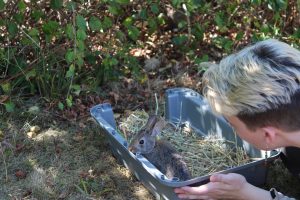
Adult males and females are paired in specially designed enclosures that allow females to select their mates, a process the zoo’s staff closely observes but does not interfere with. Once mating occurs, females are moved to secluded birthing areas that simulate natural conditions with hay, soil, and hideouts.
“We have partnered with Roger Williams Park Zoo, and what makes this successful is that we’re sharing experiences between both institutions,” Butcher said. “They’re not disturbed — we try and have minimal contact with them as possible so that their exposure to meeting each other is completely up to the female as to which male she’d like to choose.”
Nicole Schepis, a wild animal keeper at the zoo, helps oversee the day-to-day care of the breeding rabbits. “Our effort to breed these rabbits to help ensure they don’t go extinct show the great value of zoos to the conservation of wildlife, especially for species facing extinction,” she said.
The breeding program typically runs from March through July. The kits are born in the summer and weaned after about a month before being tagged for release. “We put ear tags and microchips in them so that when they’re released, we get to track them and keep tabs on their population,” Schepis said.
The New England cottontail (Sylvilagus transitionalis) has lost more than 80% of its range since the 1960s. It depends on dense shrubland and young forests, habitats that have declined due to development and forest maturation. The species also faces competition from the non-native eastern cottontail, which is better adapted to open spaces.
“They are native to New England and fill an important ecological niche in the places that they live, both for seed dispersal as well as a food source for predators,” Butcher said.
The Queens Zoo team said that breeding New England cottontail rabbits in captivity comes with its share of challenges, particularly in recreating the delicate conditions of their natural habitat. Some years yield better breeding results than others, and the staff is constantly adjusting and troubleshooting to improve outcomes. “You’ll have good years and you’ll have not so good years,” said Butcher. “It’s always trying to troubleshoot to see what can we do differently — maybe let them breed longer, maybe add more stuff or less stuff. It’s never always the same.” She added that noise and other human disturbances can also affect the rabbits’ behavior, requiring the staff to continually adapt and “think on the fly” to find what works best for the animals.
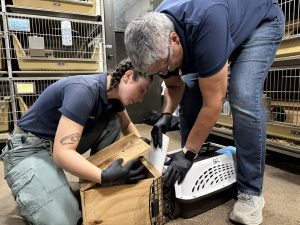
Zoo director Mike Allen said the program has shown measurable success. “Since we started this program nine years ago, we’ve released 145 rabbits,” he said. “Last year was our best year ever — we had 24 releases. This year we had 15. And overall, it’s doing really, really well.”
Researchers monitor the released populations through DNA-matched fecal samples collected in the wild. “Because we have their DNA, we can always match it up and see, okay, that’s one of ours, or that’s a wild one,” Butcher explained.
Conserving the New England cottontail is vital for maintaining the balance and health of the region’s ecosystems, the Queens Zoo team said. As a native species, the rabbits play an important ecological role in their habitats, contributing to seed dispersal and serving as a key food source for native predators
The Queens Zoo’s work is part of a regional partnership that includes the U.S. Fish and Wildlife Service, state agencies from New York and New England, conservation groups, universities, and private landowners. The program’s success has helped keep the species from being listed as federally endangered; the International Union for Conservation of Nature currently classifies it as Vulnerable.
“There’s no point where you go, ‘Okay, we’re done,’” Butcher said. “It’s something we can continue to contribute towards.”
The Queens Zoo, located in Flushing Meadows-Corona Park, is open daily. For more information, visit queenszoo.com.
